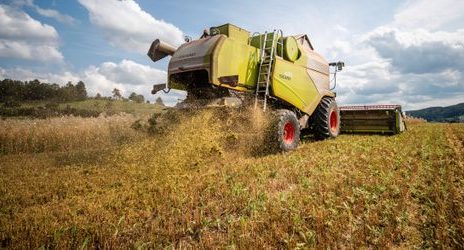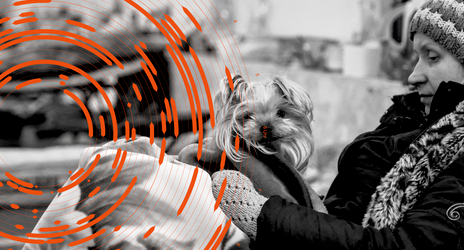The longer I work in fashion journalism, the more I become convinced that in order to make the average person’s shopping habits more sustainable, they need to be presented with a genuinely appealing alternative. Rather than measuring individuals’ behaviour against fashion’s answer to the Ten Commandments (thou shalt not covet thy neighbour’s high-street coat), we have to find creativity and excitement in new ways of consuming. Upcycled clothing has always seemed an exciting prospect in this regard, using the industry’s surfeit of waste and harnessing the limitless creativity of designers to create one-of-a-kind pieces that rival any fast-fashion find.
Fanfare Label is one of a line-up of new fashion brands that are making upcycling a core part of their brand DNA. Launched by ex–fashion buyer Esther Knight in 2018, the brand takes pre-loved garments and gives them a new lease of life through a variety of innovative textile techniques. One of Fanfare’s most popular offerings is the “upcycle your jeans” service, where you can post a pair of your old jeans and get them upcycled to your specific requirements. From colourful patchwork and hand-painted prints to intricate embroidery and embellishment, the result is totally unique to you, and all for just £65. It’s the perfect Christmas present for any tricky-to-buy-for fashion lover.
Fanfare gives me hope that a future exists in which a love of fashion doesn’t come at the expense of the environment—something tells me that this is only just the beginning for the world of upcycling. Watch this space. I sat down with Knight to find out more about how the brand started and her top tips for making our shopping habits more sustainable. Scroll down to see what she said plus what happened when I sent off an old pair of Whistles jeans to be upcycled.
What inspired you to start the brand?
I have worked in the fashion industry for over 10 years now within buying, working for many high-street and designer brands including Vivienne Westwood. As a buyer, you are responsible for everything in a production line. You take the entire process from sketch to store. Therefore, if there is an unethical part of the supply chain, buyers impact this directly. Buyers are trained to hit margin targets no matter what the cost is to people or the environment, and I was witnessing first-hand. It has become a race to the bottom on cost, resulting in corner-cutting, and we are seeing that, globally, it’s vulnerable people and children who are bearing the brunt of this.
When I started researching sustainability, many of these factors changed my outlook on the whole fashion supply chain. I began questioning why many brands just think about profit margins and are not considering the well-being of the people who are making their clothes or the well-being of the planet. But fashion doesn’t have to be this way. I realised I couldn’t be part of this industry in the same way anymore. Rather than leaving it, I decided to create a business that tackled this issue head-on. That’s when Fanfare Label was born.
Why did you choose upcycling as your USP?
I decided that I could not start a sustainable business without dealing with the sheer amount of waste already in existence. Each year, $500 billion is lost due to the underutilisation of recyclable clothing (according to the Ellen MacArthur Foundation), and less than 1% of all materials produced for clothing are being recycled into new clothing. We saw this as an opportunity.
The exorbitant amount of waste generated in the fashion industry inspired me to represent the circular economy standard; the label is a representative of what fashion could and should look like. Fanfare reduces waste by turning clothing and textile waste into premium products. It allows us to be more innovative with our collections and intelligently reuse existing materials.
We are transforming vintage pieces into unique contemporary designs, combining elements of second-hand and surplus clothing by giving existing materials a new life through various textile techniques. We have a recycled collection that takes clothing and textile wastage that would have ended up in landfill and repurpose them into new garments.
By shopping our recycled jeans, each pair saves 9500 litres of water; the 34 kg of CO2 emitted to produce one pair, similar to taking a car and driving for 111 km; and 1 kg waste from UK landfill; and supports 1.5 days of fair working conditions and pay.
How have you seen the shopping landscape change since you first launched?
The fashion industry has taken on new depths in the past year due to the pandemic; we are more aware of the poor treatment of garment workers due to fast-fashion brands failing to pay up at the beginning of lockdown. These ethical concerns have led to a growth in supporting smaller businesses that are more sustainable in their practices.
Sustainability has grown into consumers’ everyday vocabulary, resulting in a rising demand for garments to be more sustainable. Transparency has also been an important theme for the industry, both in terms of sustainability and wider cultural values. In an era of misinformation, consumers are demanding companies to be authentic and truthful in their mission.
Although this year has undeniably been tough for both individuals and businesses, staying at home has strengthened people’s ties with local community, and there is a strong shift towards supporting small business this Christmas. Now is the time for collaboration within the industry where sharing sustainable strategies, data and technology will enable faster recovery.
What has been the best seller on the website?
Definitely our signature jeans. Customers love the idea that they can shop for their very own pair of upcycled denim jeans. Plus, we also provide the option of upcycling customer’s own pair currently in their wardrobe. We are encouraging customers to love and cherish their garments and showing them inspiring ways to promote longevity and repurpose their clothing instead of buying new.
What’s your top tip for making our shopping habits more sustainable?
I would say to slow down. Starting the sustainability journey can be extremely overwhelming, so I would always say, firstly, start with research to understand why you need to make these changes. Then consider every purchase and only buy products that you truly want and that will stand the test of time in your wardrobe. It is important that we are not overconsuming and that we are valuing our fashion purchases.
What are your future plans for the brand?
We’ve got London Fashion Week planned and new collections coming out. Next year’s focus is on building our engaged community further and finding more style-conscious individuals who love the brand. Creating brand awareness and holding more of our sustainably focused events will be a key goal for next year. As for physical goals, we dream to have our own store where we can show people what the future of fashion looks like.
Style Notes: I decided to upcycle a pair of old Whistles jeans, as I already had a couple in the same silhouette and fancied something a little different. I asked for one of the brand’s patchwork options and sent a few inspo pics for reference. I’m super happy with the outcome: The updated jeans feel so standout and, in my opinion, could be mistaken for a designer buy. PS: My jumper is from another fab upcycling brand called Mad Brown Knitwear—go check it out!
Up Next: How to Find the Best Vintage Pieces, According to a Second-Hand Expert





